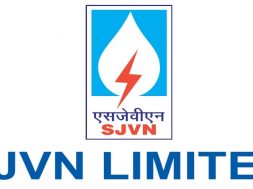
In Short : India’s energy demand is set to grow 11-fold by 2070, with electricity demand tripling by 2047, according to NITI Aayog’s Rajnath Ram. Infrastructure, investment, and supply chains will require massive expansion. Sectors like steel, cement, and transport will see significant growth, necessitating strategic planning to balance energy security, affordability, and sustainability in India’s transition.
In Detail : India’s energy demand is projected to rise 11-fold by 2070, driven by rapid industrialization, urbanization, and economic growth. According to Rajnath Ram, Programme Director (Energy) at NITI Aayog, electricity demand alone is expected to triple by 2047 and grow up to five times by 2070. This surge will require significant investment in infrastructure, supply chains, and energy resources to support the country’s ambitions of becoming a developed nation by 2047 and achieving net-zero emissions by 2070.
Currently, India’s energy infrastructure is only about 18-20% complete, highlighting the vast development still needed to meet future demands. Electrification’s share in total energy consumption is expected to rise from the current 19-20% to nearly 60% by 2070. Additionally, passenger travel demand is forecasted to quadruple, while freight transport will expand nearly fivefold, further increasing energy consumption across multiple sectors.
Industries will experience substantial growth, with steel production expected to increase sixfold and cement production projected to rise five times. Aluminum and ethylene production will also see major expansions, while the refinery sector is anticipated to grow eightfold. The demand for cooling solutions, driven by rising temperatures and urbanization, is expected to multiply 19 times, while agricultural mechanization is set to triple, increasing power requirements in rural areas.
The rapid expansion of India’s energy landscape will demand a massive surge in investment, resource mobilization, and policy planning. The government and private sector must collaborate to develop renewable energy sources, enhance grid infrastructure, and improve energy storage capabilities. Strengthening domestic manufacturing of key components, such as solar panels and batteries, will be crucial to ensuring energy security and reducing reliance on imports.
Despite this projected growth, challenges remain in balancing energy security, affordability, and sustainability. Ram emphasized that strategic planning is essential to address these concerns while ensuring an inclusive and stable energy transition. Policies must focus on optimizing energy efficiency, expanding clean energy adoption, and integrating smart grid technologies to manage increasing electricity demand effectively.
India’s journey toward a sustainable and energy-secure future will require coordinated efforts from policymakers, industries, and consumers. Investments in renewable energy, infrastructure development, and technological innovation will play a key role in meeting the country’s energy demands while maintaining environmental responsibility. As the nation moves toward its 2070 goals, a well-planned and diversified energy strategy will be critical in shaping a resilient and prosperous future.











